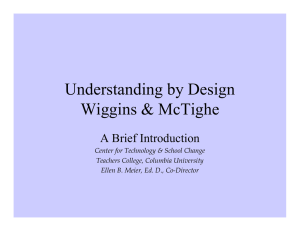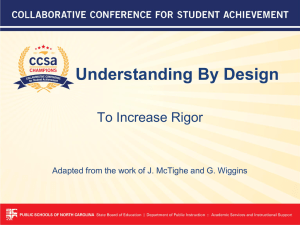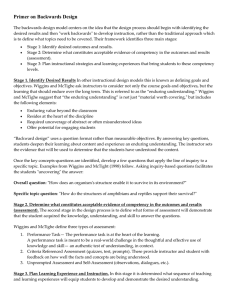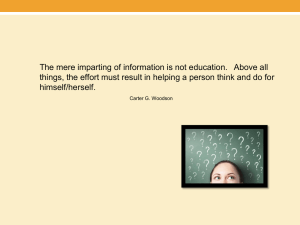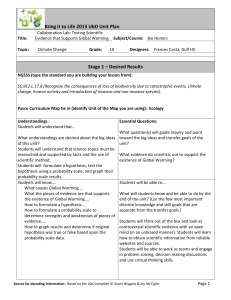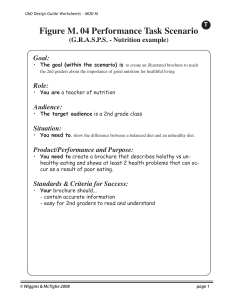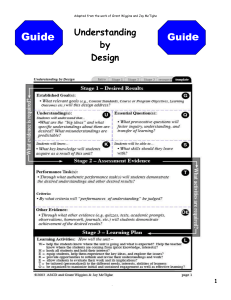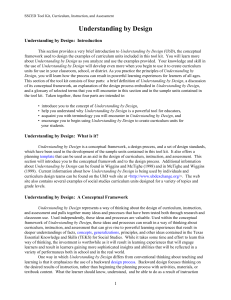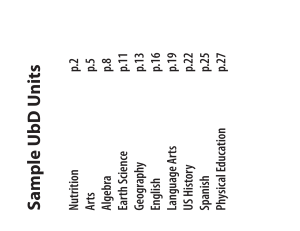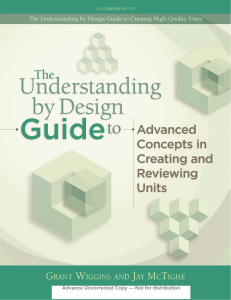An Introduction to UBD Curriculum Design.ppt
advertisement
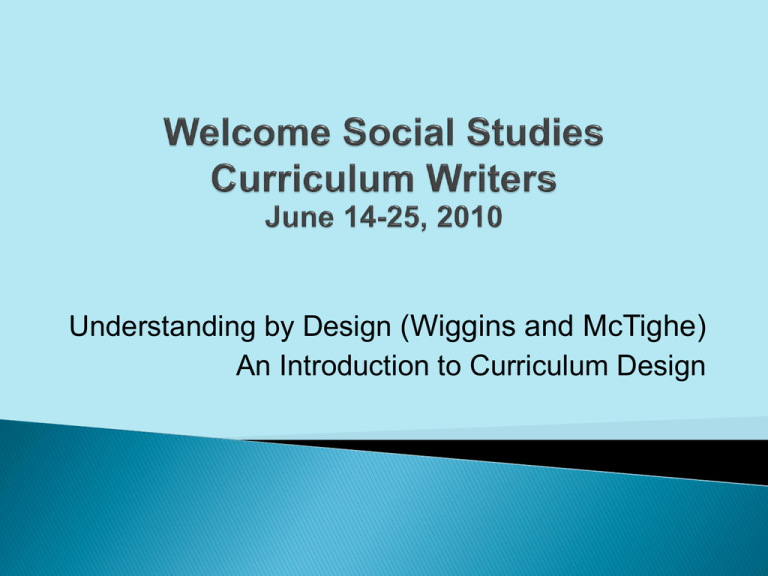
Understanding by Design (Wiggins and McTighe) An Introduction to Curriculum Design Curriculum Writers will assist the AISD social studies curriculum team in creating three new curriculum documents: ◦ Yearly Itinerary ◦ GPS (Grading Period Snapshot) ◦ Curriculum Roadmap ◦ We may also ask you to finish adding lessons to the AIMS IPG site. Please wait for confirmation from the team regarding populating AIMS. This work is actually quite exciting. The curriculum design closely follows the work of Grant Wiggins and Jay McTighe (of UBD fame) giving a clear workplan for our instruction. UBD—Understanding by Design ◦ Grant Wiggins and Jay McTighe Start with the end—the desired results (goals and standards)—and then derive the curriculum from the evidence of learning (performances) called for by the standard and the teaching needed to equip students to perform. Yearly Itinerary An “overview” of our course for the entire year or an entire semester. Grading Period Snapshot (GPS) A document requested by principals which they will use to guide them through your classroom curriculum throughout the year. The curriculum roadmap contains most of the elements that AIMS contains. Includes Concepts and Essential Questions, as well as the Unit, Arc and Lesson Level. Uses UBD language. Curriculum Road Map Understanding by Design Identify desired results. Determine acceptable evidence. Begin with the end in mind Plan learning experiences and instruction. Big Ideas/Enduring Understandings Worth being familiar with Enduring understandings go beyond discrete facts or skills to focus on larger concepts, principles or processes. Important to know and do “Enduring” understanding Offer potential for engaging students These are the concepts that will anchor the course. These are the important ideas that we want student to “get inside of” and retain after they’ve forgotten many of the details. They reside at the “heart” of the discipline. Big Ideas/Enduring Understandings These questions guide our teaching and engage students in uncovering the important ideas at the heart of each subject. These questions cannot be answered satisfactorily in one sentence. These questions are multilayered and provocative and they reveal the richness and complexities of a subject. These questions should be asked over and over. These questions raise other important questions. Must a story have a moral, heroes and villains? Who is a friend? Is U.S. History a history of progress Essential Question What is the moral of the story of the Holocaust? Is Huck Finn a hero? Are Frog and Toad true friends? Is the gap between rich and poor any better now than it was 100 years ago? Unit Question Concept (Big Idea) Essential Questions Unit Arc Resources TEKS Vocabulary Student Work Products/Assessment Evidence
